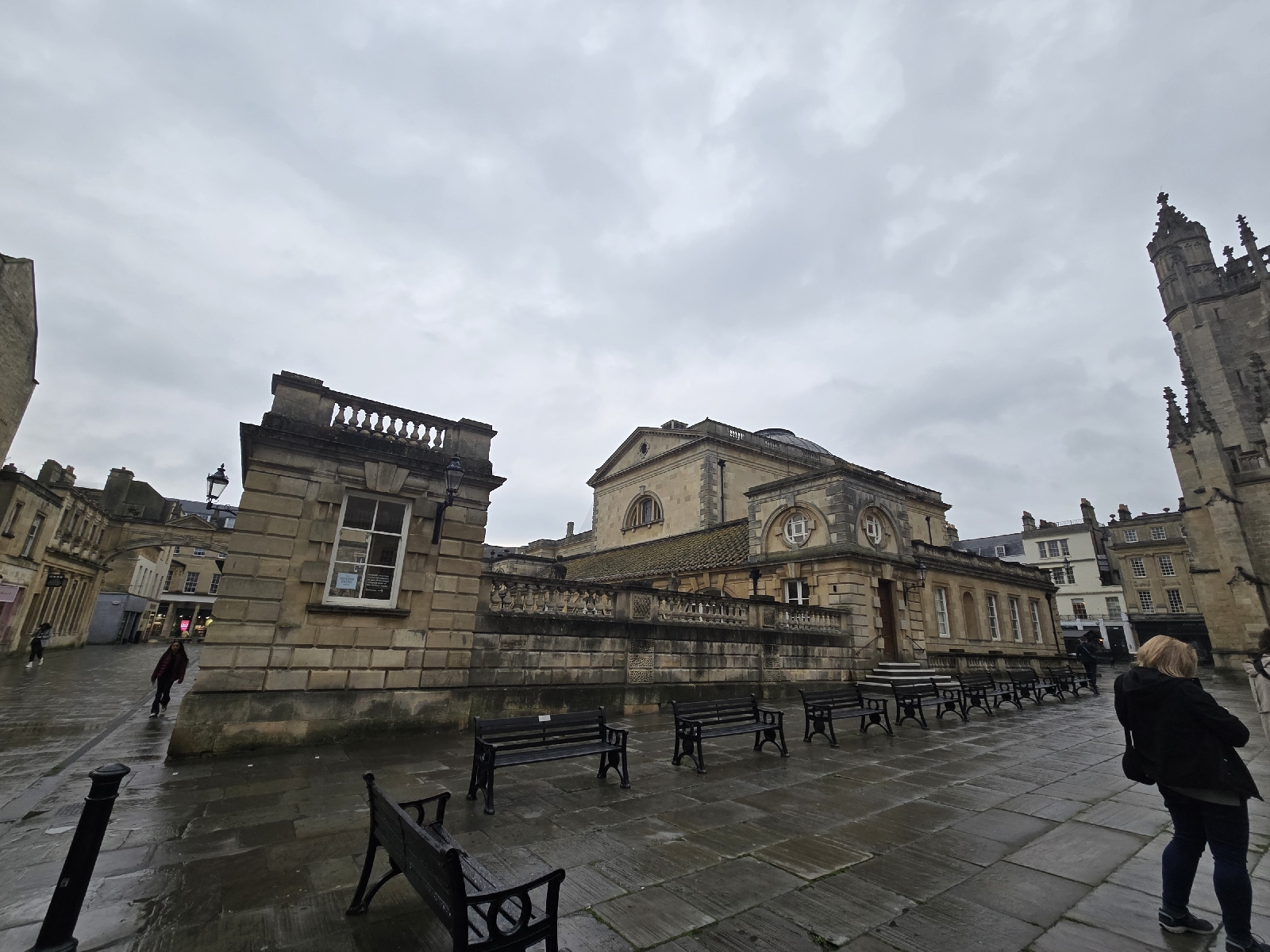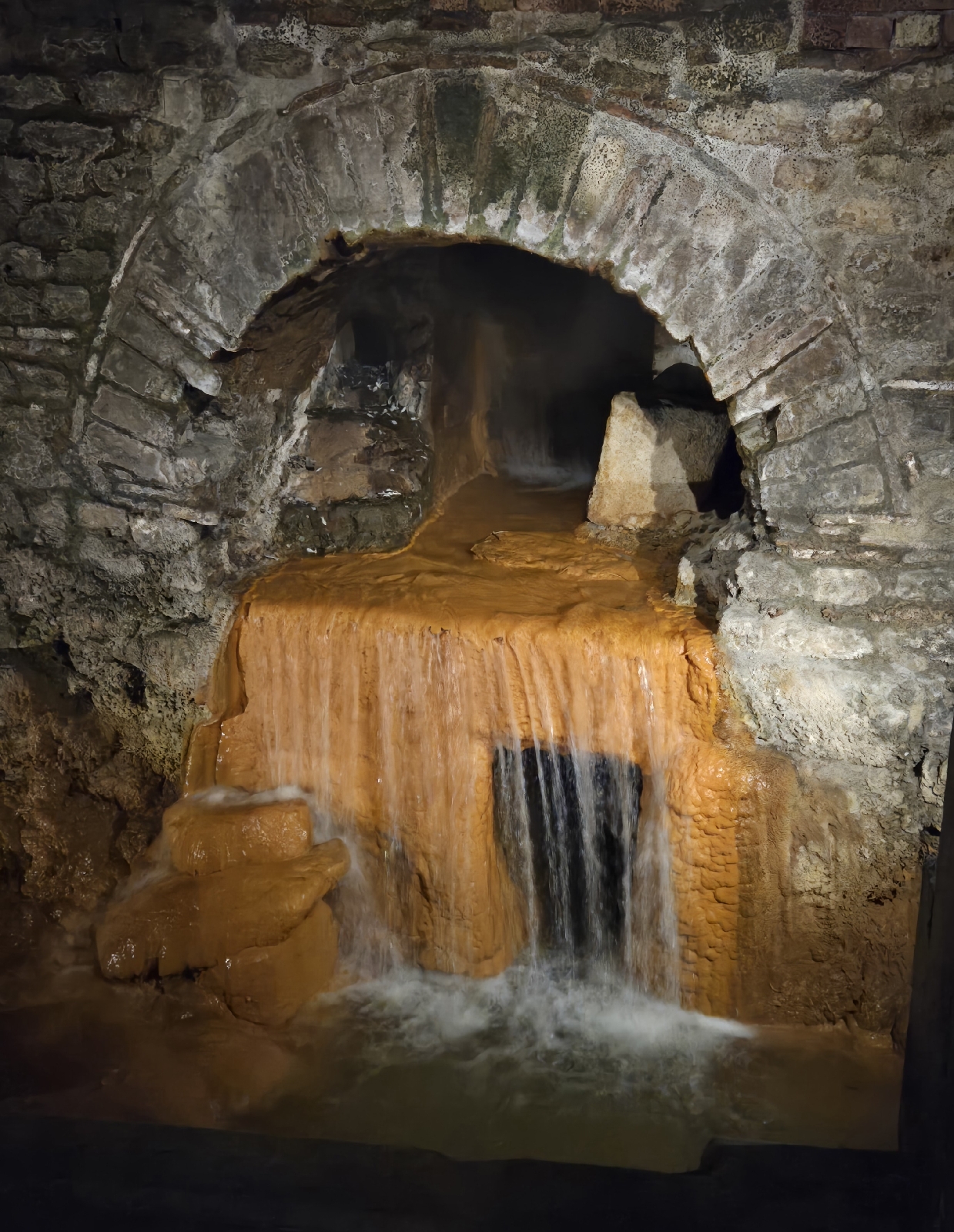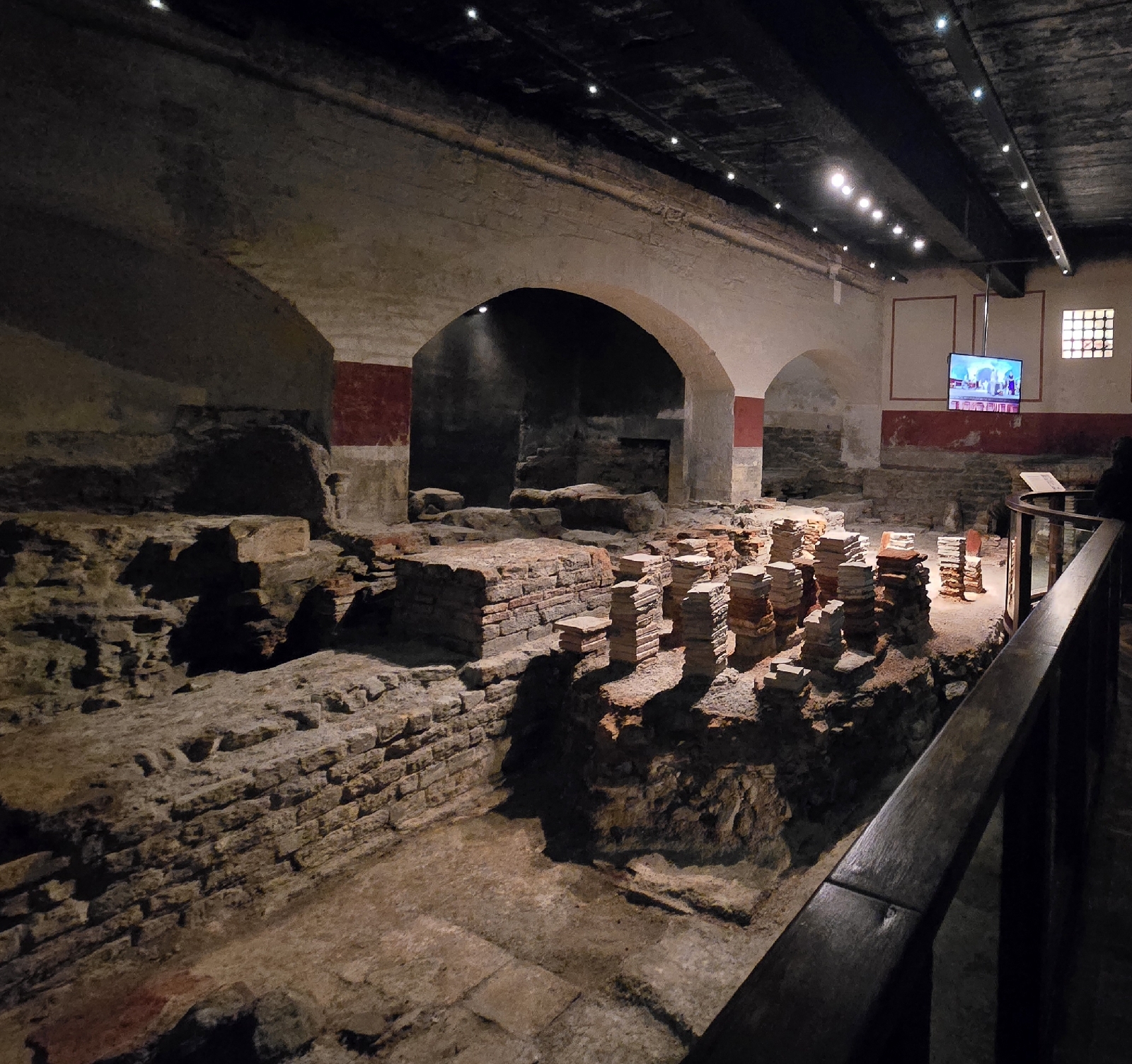Scrub a dub dub
Bath, of course, is named after the Roman Baths built there in 43 AD, which are a UNESCO World Heritage Site. Aquae Sulis (the Roman name for Bath) was often called "Little Rome". The two cities shared many similarities, including both being built on 7 hills.
Bath is home to the only 3 naturally occurring hotsprings in England. Unlike most Roman structures, which were military installations, like fortresses and walls, Aquae Sulis was a recreational and religious place.
Aquae Sulis has a dual goddess. Sulis and Minerva were combined into a single entity, Sulis Minerva.
The sacred spring was a site of pilgrimage. People traveled from all over the Roman Empire to throw offerings into the water to receive blessings from Sulis Minerva. There were also many slips of metal, about the size of a dollar bill, with requests for vengeance.
"I curse him who has stolen my cloak, whether man or woman, whether slave or free, that the Goddess Sulis inflict death upon...and not allow him to sleep or have children now or in the future" The fellow with the missing cloak should have been a lawyer, he covered every contingency!
The Great Pool
We didn't have time to do much in Bath, besides the Roman baths. It's an incredible and beautiful place, I could easily spend a week here.
It's the perfect place for a Jane Austin fan, such as myself. "Persuasion" is set in Bath, and many of the movies are filmed here because of the expanse of Georgian architecture. In fact, there was a Jane Austin festival happening while we were here. We saw several people strolling about in costumes.
The Georgian style is unmistakable, with it's limestone blocks and minimalistic symmetry. The most frivolous they got was an occasional wrought iron balcony. The clothing was simple too: high-waisted dresses with straight skirts. No hoops, no frilly layers, no elaborate hats.
You may have noticed the blocked up windows. People could easily lie about their income, so they were taxed on their conspicuous consumption instead. Windows were a luxury, so there was a tax based on how many you had. This may be the origins of the term "daylight robbery", as the government was robbing people of natural light. On the flip side, if you wanted to show off how wealthy you are, instead of a fancy car, you had lots of windows.
We had just enough time to pop in and pick up a famous Sally Lunn bun. Sally lived in Bath in the 1680s and her buns were famous around the city. There's a tiny cafe on the street level, in the oldest building in Bath. If you duck your head, you can descend down treacherous steps into the basement where there is a tiny museum dedicated to Sally. There you can pick up a bun to go, packaged in a gorgeous box.




















Comments
Post a Comment